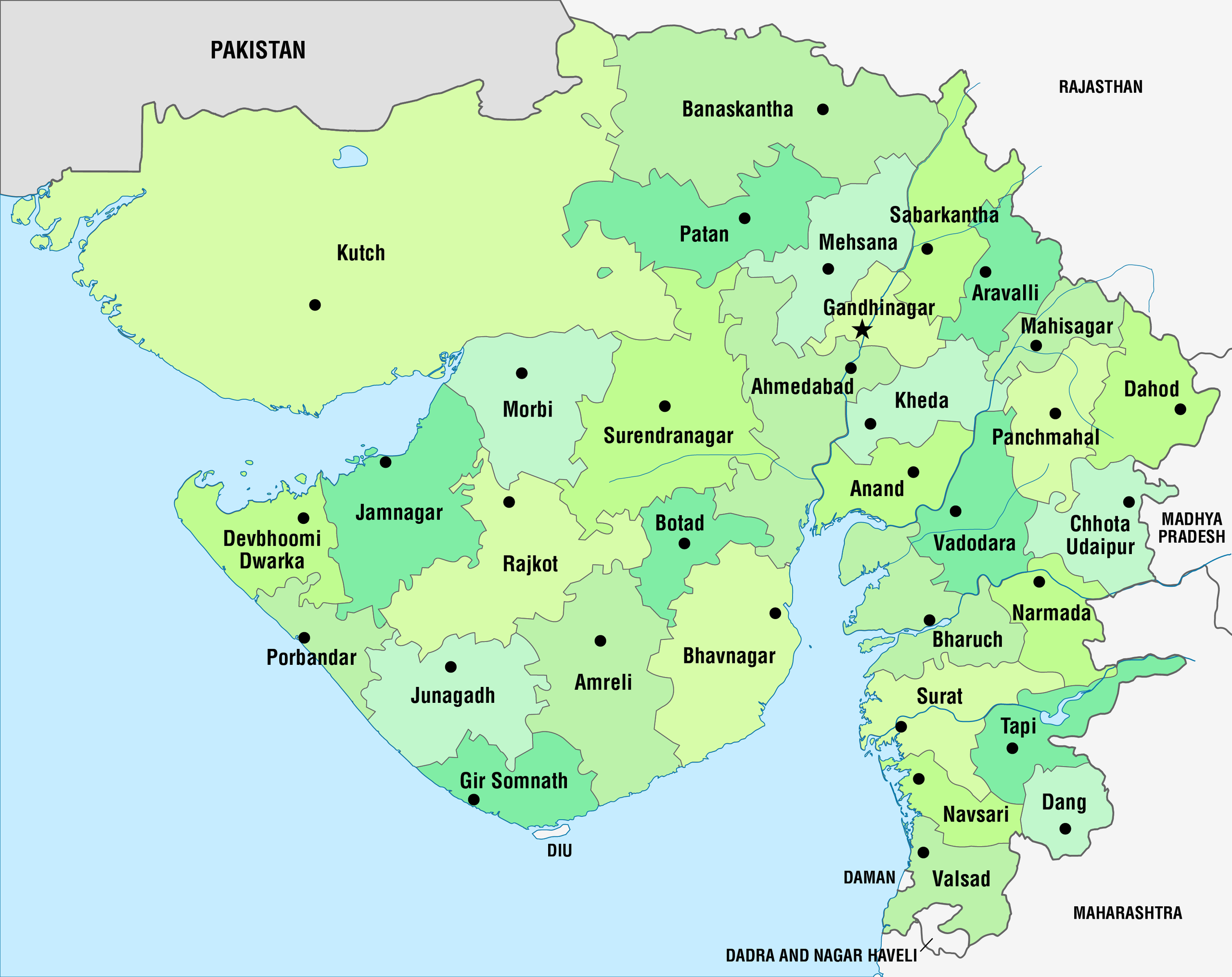The intricate strands of caste create a fascinating tale of identity and social dynamics within the kaleidoscope of Gujarati culture. This blog explores the significant impact of caste on Gujarat’s socioeconomic fabric by delving deeply into the mosaic population. We explore the historical development and modern subtleties of caste distribution, tracing it back to the ancient Vedic varnas and demographics today. Our objective is to provide a comprehensive view on the complex relationship between caste and population in Gujarat by analyzing statistical data, socioeconomic trends, and cultural consequences.
Following is the percentage detail of Gujarat population caste wise
- Adivasi – 15%
- Dalit – 7.5%
- Patidar – 12.5%
- Muslim – 9%
- Jain – 1%
- Koli & Thakor – 20%
- Brahmin, Bania & Rajput – 15%
- Non-Koli & Non-Thakor OBC – 20%
Below table is Gujarat’s districts with their population (Including all caste and region).
| DISTRICT | TOTAL POPULATION |
| Ahmadabad | 7214225 |
| Amreli | 1514190 |
| Anand | 2092745 |
| Banas Kantha | 3120506 |
| Bharuch | 1551019 |
| Bhavnagar | 2880365 |
| Dohad | 2127086 |
| Gandhinagar | 1391753 |
| Jamnagar | 2160119 |
| Junagadh | 2743082 |
| Kachchh | 2092371 |
| Kheda | 2299885 |
| Mahesana | 2035064 |
| Narmada | 590297 |
| Navsari | 1329672 |
| Panch Mahals | 2390776 |
| Patan | 1343734 |
| Porbandar | 585449 |
| Rajkot | 3804558 |
| Sabar Kantha | 2428589 |
| Surat | 6081322 |
| Surendranagar | 1756268 |
| Tapi | 807022 |
| The Dangs | 228291 |
| Vadodara | 4165626 |
| Valsad | 1705678 |
Gujarat’s caste system has its historical roots in ancient writings and scriptures that outlined varna and jati categories as the basis for society systems. Like the rest of India, Gujarat’s caste system has its roots in the Vedic era and was originally intended to divide society into discrete social groups according to vocation and responsibilities. The hierarchical structure was composed of four varnas: Shudras (laborers and service providers), Vaishyas (traders and merchants), Kshatriyas (warriors and kings), and Brahmins (priests and academics). Each varna was given distinct functions and responsibilities.
These varnas broke up throughout time into many jatis, or sub-castes, each with own social classes, traditions, and customs. Gujarat’s complicated social fabric was shaped by the strict enforcement of caste lines, which governed aspects of life like as profession, marriage, and social relationships.
Throughout history, Gujarat’s caste system has been impacted by a number of factors, including as contacts with other civilizations, invasions, and foreign domination. Caste dynamics saw major changes during the Mughal and British colonial periods, with the latter instituting formal caste enumeration and categorization systems for administrative purposes.
In Gujarat, caste has a long history, yet it still has a big influence on social interactions, employment prospects, and political dynamics. It represents both historical continuity and historical change. Gaining an understanding of these historical bases is essential to comprehending the intricacies of caste in modern-day Gujarati society.
Some Questions & Answers On Population Of Gujarat.
Which caste has highest population in Gujarat?
Answer is Adivasi.
Which city has highest population in Gujarat?
Answer is Ahmedabad.
What is the population of Gujarat state in India as of 2021?
Answer is 63.8 million people.
